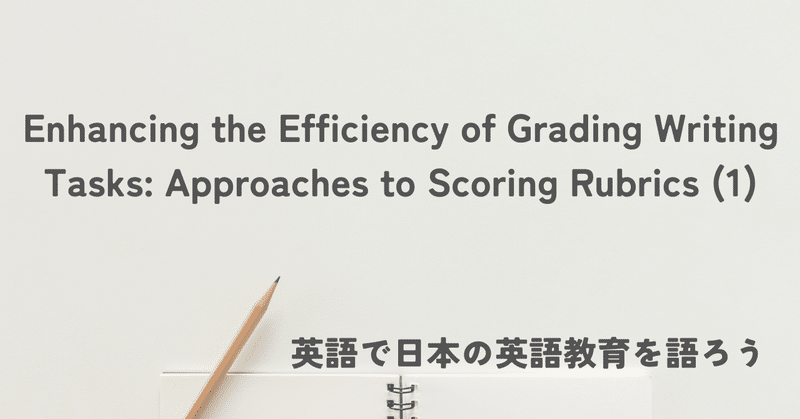
Enhancing the Efficiency of Grading Writing Tasks: Approaches to Scoring Rubrics (1)
Using rubrics to evaluate students' writing assignments has become increasingly common. In the past, grading often involved deducting points for each grammatical mistake, but now this approach seems to be declining.
The design of scoring rubrics should vary depending on the context and purpose of their use. For rubrics used in classroom language activities and tasks, the primary goal is to serve as a guide for learners. It's also important to craft the rubrics in a way that allows learners to reflect adequately on the feedback they receive.
However, the rubric used to evaluate writing assignments assigned in term exams requires different things.
When creating a rubric for writing tasks in term exams, I prioritize the following:
Grading efficiency
Fairness (addressing differences among instructors)
Encouraging student reflection upon receiving their graded work
Versatility
Firstly, this post will focus on how to design a rubric that enhances grading efficiency.
Scoring Rubric to Improve Grading Efficiency
A scoring rubric that improves grading efficiency is crucial, especially in the context of regular term exams. I believe that the most important aspect is to continue assigning writing tasks. What is most important to avoid is neither rough grading nor inadequate feedback, but rather, the tendency for teachers to stop assigning writing tasks because they find it too much work to grade them.
When grading dozens or even more than a hundred essays, it's necessary to devise ways to accelerate the process. Here are some strategies I use to enhance grading efficiency:
1. Narrowing Down the Evaluation Criteria
Too many evaluation items can make grading laborious. I usually limit it to three aspects: "Does it meet the assignment's requirements?", "Is the structure logical?", and "Are there any grammatical issues that hinder understanding?".
2. Using a Four-Level Grading Scale (Virtually Three Levels)
I find a four-level grading scale like A, B, C, D appropriate, where D is used for answers that completely lack the required word count and don't qualify as a response, effectively making it a three-level system (A, B, C).
3. Setting Intermediate Points for Indecision
This strategy greatly improves grading efficiency. For example, when assigning scores to the four levels of the ABCD scale, depending on the distribution of scores, one might do the following:
(In an 8-point scale)
A (8) - B (6) - C (4) - D (2)
(In a 15-point scale)
A (15) - B (11) - C (7) - D (3)
Notice in each scale there are scores for in-between levels, like 7 between A and B in the 8-point scale, or 13 as a midpoint between A and B in the 15-point scale. This allows for quicker grading decisions, as you can simply choose the midpoint if you are having difficulty deciding on a score.
4. Stating Clearly that Corrections or Comments Will Not Be Provided
This might seem bold, but for the sake of efficiency, I don't provide individual corrections or comments on essays in regular exams. This policy is communicated in advance to students through exam instructions or on the question paper.
I assure them that they receive ample feedback during regular classes, so the focus in exams is on prompt return of papers without individual comments. Of course, if a student requests feedback after the exam, I accommodate that individually.
The Most Important Thing is to Keep Assigning Tasks
While there are pros and cons to this approach, I believe in prioritizing grading efficiency to avoid the drawbacks of rushed grading, insufficient feedback, or reluctance to assign writing tasks in exams.
While I might not find grading a burden myself, other teachers that teach the course with me may find it stressful, and having to pay attention to their sentiments can in turn cause considerable stress to me. This stress can inadvertently lead to fewer writing assignments in exams.
By refining the scoring rubric and reducing the burden of corrections and comments, we can ensure that grading doesn't become an overwhelming task and continue to assign essay writing in regular exams.
(This is an English version of my previous post, ライティング問題の採点効率を上げる(採点用ルーブリックのあり方①).)
この記事が気に入ったらサポートをしてみませんか?
